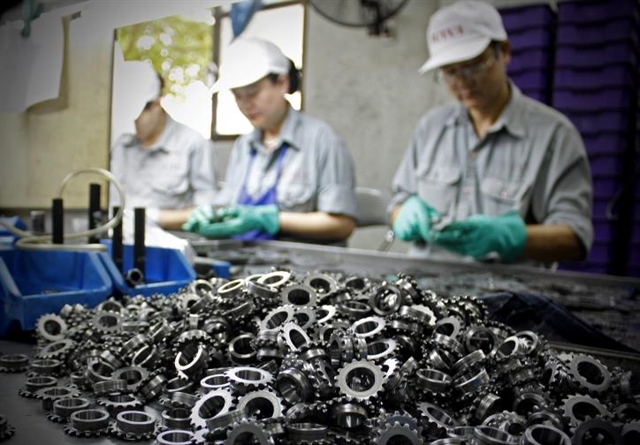US truck tariffs may moderately affect Việt Nam’s growing auto parts sector.

HÀ NỘI — US President Donald Trump’s decision to impose a 25 per cent tariff on imported medium- and heavy-duty trucks from November 1 is expected to create adjustments along global supply chains, including in Việt Nam.
Trump announced the tariff earlier this month, saying it would protect domestic manufacturers from unfair competition. The measure is expected to benefit American companies such as Peterbilt, Kenworth and Freightliner.
Mexico, Canada, Japan, Germany and Finland are currently the top suppliers of medium- and heavy-duty trucks to the US. Mexico alone has tripled its truck exports since 2019. Under the US–Mexico–Canada Agreement (USMCA), trucks are exempt from tariffs if at least 64 per cent of their value originates from North America.
However, many manufacturers such as Stellantis, Volvo and Daimler rely heavily on Mexican assembly plants. Volvo is building a US$700 million factory in Monterrey, scheduled to open in 2026 – around the time the tariff could apply.
Việt Nam does not export trucks to the US and is not a large supplier of truck parts. However, the country has become more integrated into global automotive supply chains over the past decade.
According to the General Department of Customs, by March 15, 2025, Việt Nam imported $1 billion worth of auto parts, while exports reached over $2 billion, posting a trade surplus of $1 billion in the first quarter.
Việt Nam has about 2,000 auto parts manufacturers employing 600,000 workers. Production focuses on basic components, with exports concentrated in wiring systems, plastic parts and metal components for passenger cars.
Japanese firms Yazaki and Sumitomo Wiring Systems operate major plants in Trà Vinh and Hà Nội, exporting wire harnesses worth $2.1 billion in 2019.
THACO Industries in Quảng Nam runs 20 factories making body parts and chassis, while Bosch Việt Nam supplies transmission belts and sensors to Europe. Foxconn, LG Innotek and Panasonic produce electronic modules for commercial vehicles.

While the scale remains modest compared to Mexico or Germany, Việt Nam’s role is expanding. JETRO data show the localisation ratio at Japanese manufacturers in Việt Nam rose from 28 per cent in 2012 to 37 per cent in 2022, reflecting deeper integration into global networks.
Limited but real risks
Any decline in North American truck demand due to higher import costs could have a knock-on effect on intermediate suppliers, including those in Việt Nam.
Professor Vidya Mani of Indiana University told Investopedia: “Changing the supply chain in response to high tariffs is a massive undertaking and lasts beyond any one administration.”
For Việt Nam, the near-term impact is likely to be moderate. But the situation underlines the importance of market diversification and technological upgrades to reduce vulnerability to external policy shifts.
Machinery, equipment and auto parts are Việt Nam’s second-largest export group to the US, accounting for 18 per cent of total shipments, or $22 billion in 2024. If Washington extends tariffs to other product groups after its ongoing trade investigation, potential exposure could widen.
Trần Lương Sơn, director of the Entrepreneurship Program at SUNY Cobleskill – the State University of New York, told diendandoanhnghiep.vn that Vietnamese firms should be proactive, stressing that agility, trust and innovation are key. Companies need transparent origin labelling and early alignment with US standards.
Deputy Director of the Institute for Strategy and Policy Research of Industry and Trade under the Ministry of Industry and Trade, Lê Huy Khôi, said Việt Nam’s automotive strategy sets clear goals through 2030, focusing on socio-economic efficiency and a stronger industrial base.
By then, the country aims to master key production technologies, meet green standards, boost domestic supply and expand its role in global value chains with higher export value.
According to the ministry's Industry Agency, more incentives are needed for domestic supporting industries, especially automotive, focusing on technology upgrades, product standardisation and stronger participation in competitive value chains. — VNS





